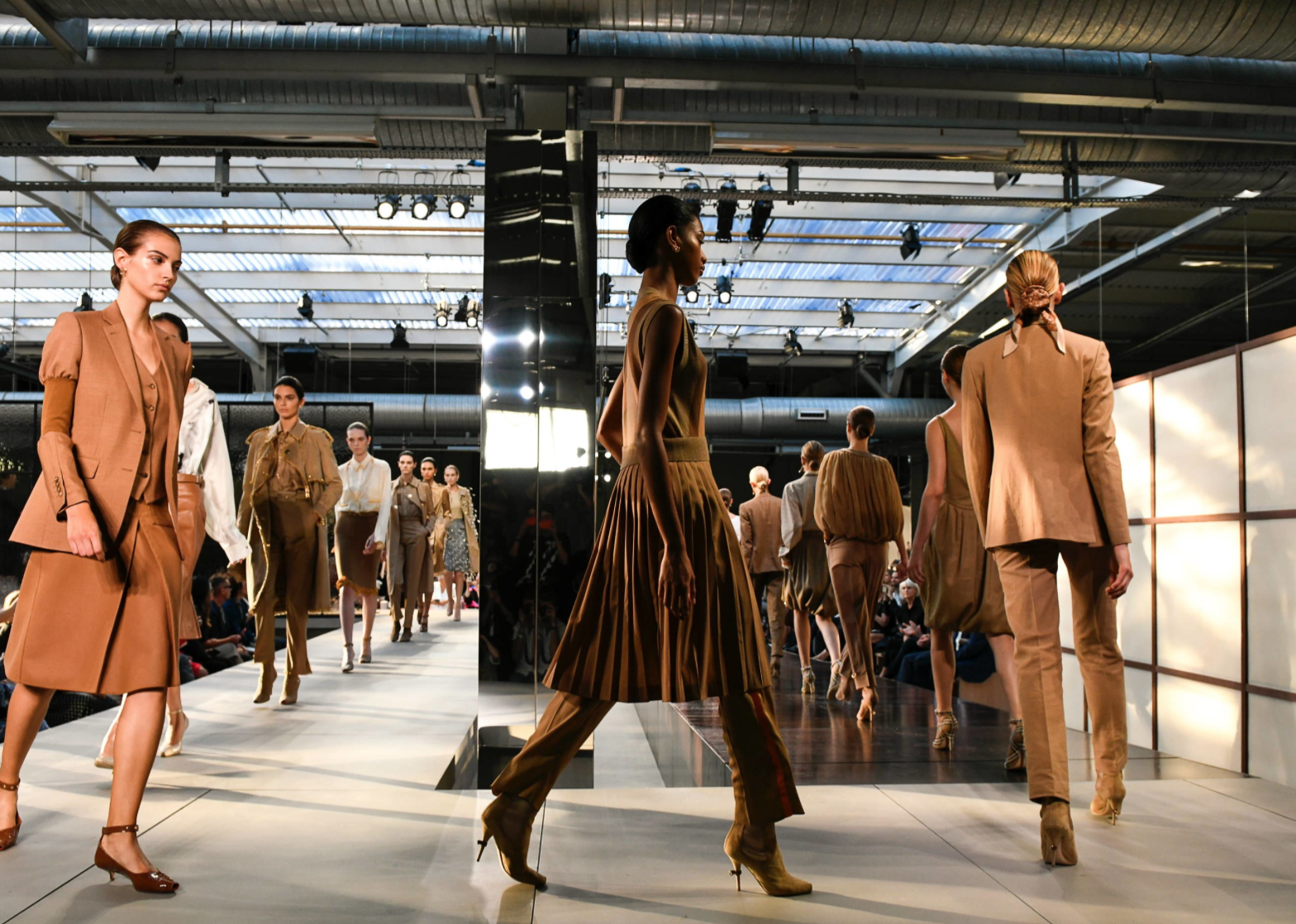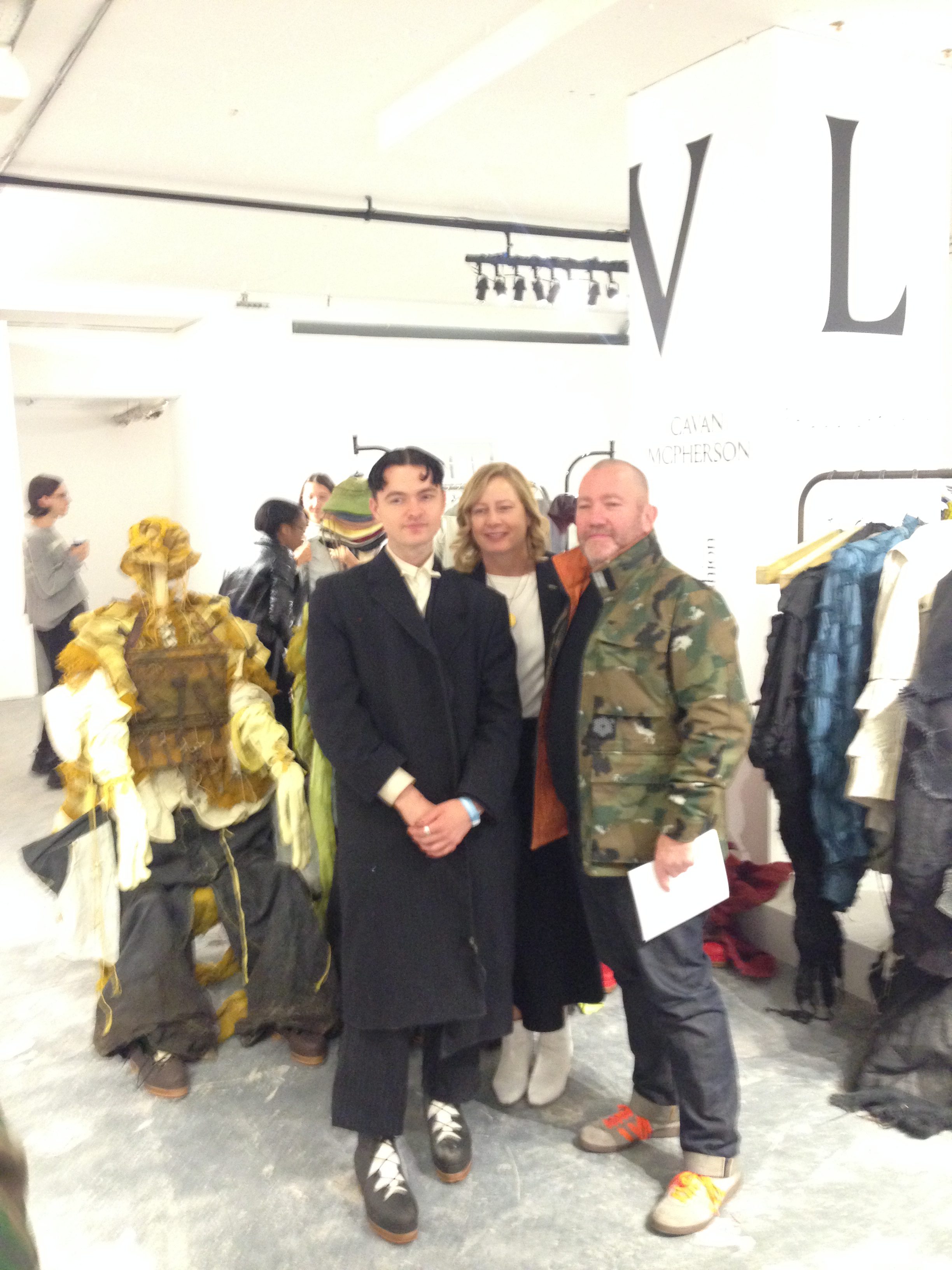London Fashion Week: SS19
The London Collections began on a high note as Caroline Rush, chief executive of the British Fashion Council, unveiled the updated figures outlining the impact of the local fashion industry. She announced that the fashion industry adds £32 billion in GDP to the British economy; equal to 5.4 per cent growth, against the economy’s 1.7 per cent. Representing 890,000 jobs, fashion is almost as large as the financial sector; a neat little tidbit putting a spring into everyone’s step. Despite a sporadic sneer here and there from those passing by the “bizarre” fashion festivities and the occasional protest (it is worth noting this season LFW was completely fur free), fashion remains a legitimate and vital source for this economy’s growth.While fashion’s growth is encouraging, the heavy weight of Brexit burdened the minds of buyers, press and executives.
Representatives from international markets worry as they start to see a Britain inching away from its global and outward facing position. Last season London offered a more optimistic tone more in line with “Keep Calm and Carry On”. However, fast forward 6 months and with still no viable plan of action presented by the government, everyone from CEOs contemplating their strategy to graduates uncertain of where to set up shop have voiced their very real concerns. And now with the EU27 rejecting the “Chequers” plan in Salzburg, Austria last week, the UK again moves their marker back 5 spaces to “Start”; painfully aware of the time ticking to March 29, 2019. New York has the big business (e.g Micheal Kors buying Versace), Milan has the craft manufacturing, Paris is the historical epicentre of fashion. And what does London bring to the table?
World-class education, developing the world’s most promising talent — locally, from the EU and beyond.One only needs to be reminded that Burberry, the most quintessentially British label, is headed by two Italians; Marco Gobbetti, CEO, and Riccardo Tisci, creative director and proud graduate of London institution Central Saint Martins. If the UK loses its edge in attracting top talent or in supporting emerging designers I shudder to think what will happen to this industry, currently booming. Visually capturing this lingering tension would perhaps be the video projection of mustering storm clouds at Richard Quinn; bleak, ominous, threatening.Quinn, since his own Saint Martins graduation only two years ago has already repeatedly captured global headlines.
From Queen Elizabeth sitting front row at his show last season to Amal Clooney wearing one of his designs at the Met Ball, Quinn is a shining star in London’s stratosphere. This season, instead of opening with his accustomed vibrant wallpaper prints, models stepped out in pitch black velvet ski masks and morph suits. The intimidating darkness of the all black tutus, heels and opera coats devoured the models. This opening sequence was made especially dramatic as the London Philharmonic Orchestra played Rossini’s William Tell Overture, followed by Young and Beautiful by Lana Del Rey behind a captivated audience.While the touching theatrics of the collection was not a commentary on Brexit, there was a meaningful message by shining a spotlight on the severe government cuts to art education. As a consequence, according to the show’s press notes, we have witnessed a 34% drop in arts GCSE entries between 2010 and 2018.
Quinn stated that it was important for him to celebrate the British education system and the community where his own artistic skills were refined. As a touching, genuine gesture, Quinn invited current art students from Chislehurst and Sidcup Grammar School, St Thomas More Catholic Comprehensive, and Saint Martins.As a whole, London’s collections were bright and bold, with the palette of choice being all shades of highlighter connoting Warning! Attention! Take for example a bright orange cropped power suit at Henry Holland or Winnie Harlow’s neon yellow dress at Natasha Zinko. Preen by Thornton Bregazzi, Rejina Pyo, and Roksanda also adopted artificial colours, a gesture underlining the influence of Miuccia Prada who popularised neon earlier this year. The shade du jour made the neon clad police officers standing in front of 180 the Strand look particularly en vogue!Headwear was a dominant theme in London, where we saw the bucket hat continue its lowkey resurgence at Micheal Halpern and Alexa Chung, while Victorian style giant saucer hats covered in embroidered veils at Erdem and Simone Rocha added to ultra-feminine theatrics.
The DIY aesthetic headwear at Matty Bovan were also very impressive- together through a collaboration with Stephen Jones headdresses featuring whisks, washing up sponges, and scattered cutlery suddenly seemed very luxe. While Bovan offered a divine explosion of colour, layers and texture, the majority of the London collections was conservative based on longer hemlines, minimal exposure of skin and a refined appeal. Take Tisci’s debut for Burberry where the majority of looks were based off of traditional trench coats, sensible suiting, poised pleated skirts, precise knitwear and appropriate silk scarves. He incorporated the heritage Burberry check into a polite pussybow blouse and within the linings of a smart coat. Of course as one of the original frontrunners of street style, Tisci offered an alternative Burberry genre - he intended the brand to be inclusive to mothers, daughters, fathers and sons.
With Dr. Martens look-a-likes and punky t-shirts reading the words Who Killed Bambi, referencing the Sex Pistols album, it was able to also cater to a younger customer. With over 130 looks in total, there wasn’t a defined direction as to where Tisci will take the brand, but for a first collection it ticked all the boxes.While his Burberry debut and Victoria Beckham’s 10 year anniversary were media highlights for the week, the magic behind London lies in its role as being a launching platform for young talent. It was an immense pleasure to see graduate collections up close at the BFC showrooms and to have the opportunity to hear the designer’s visions. Cavan McPherson for example is a Scottish designer who has recently graduated from The Royal College Of Art with an MA in Womenswear Knit. She has generated a strong visual vocabulary based on sculptural knitwear with woven silks and is simultaneously building an archive of ethical fabrication and colour pigment.
Then there was Paolo Carzana who I distinctly remember from his outstanding BA Westminster collection titled “The Boy You Stole” presented last February. His collection was commenting on power abuse in the industry and was - by the way- 100% vegan. Opposed to leather, Carzana opted forreconstituted fabrics and Pinatex, a substitute made from waste pineapple leaves, coloured in vegetable dyes. Impressively, his raison d’être is in creating fashion which works with nature not against it. The kids are alright.Facts and figures aside, London Fashion Week is special. It continues to push the global industry forward by introducing programs such as the "Positive Fashion" initiative which, launched this season, set sustainability, ethics and wellbeing standards into place. It challenges conventions through immersive presentations. It showcases the new crop of visionary designers as equals, next to industry veterans and lends opportunity to emerging brands rooted near and far off from the UK’s shores. It remains the most energetic and authentic of the major fashion capitals and, whichever way we can, it is our duty to secure its reputation, as we stride into an uncertain future.



